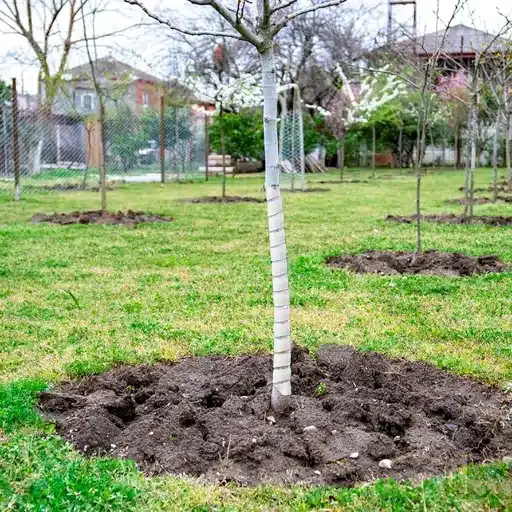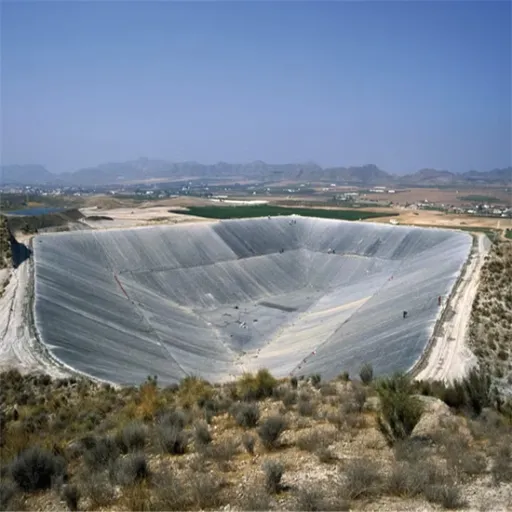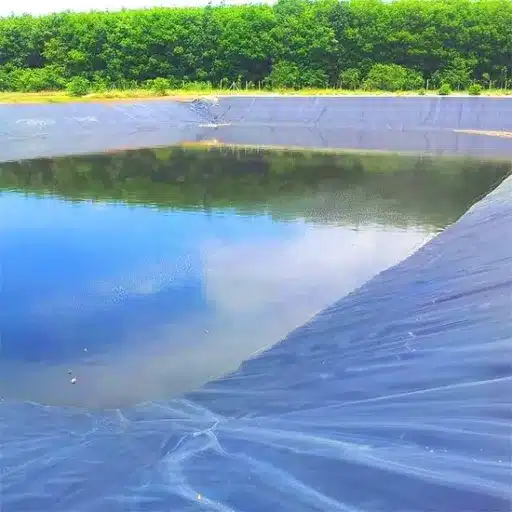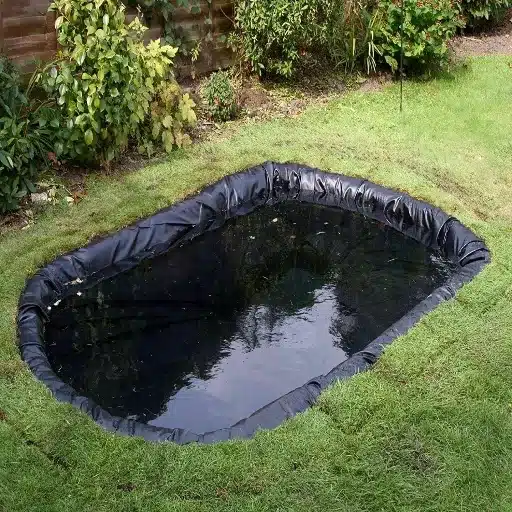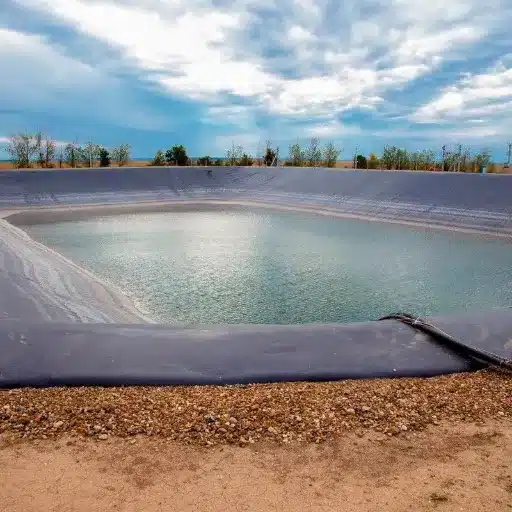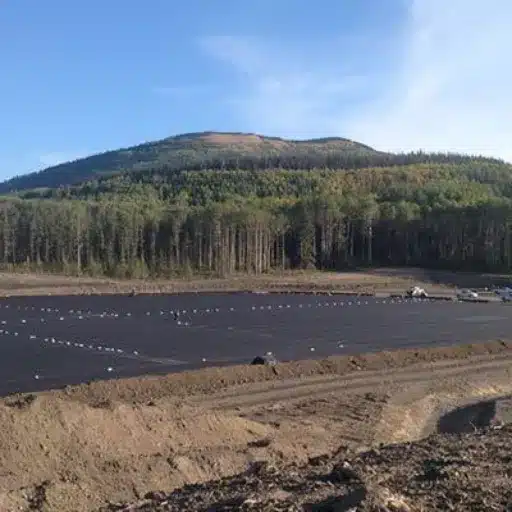The trees’ health and longevity depend on the care given, and this includes trees found in the backyard or a bigger landscape. Trees can be damaged by various factors such as bad weather, pests, or outdoor appliances, and when this happens, they become susceptible to other injuries, which can hinder their, hence, losing the stability of their whole being. This is the reason tree wraps and bark guards become important. These kinds of protective measures do not only prevent trees from getting harmed by things outside but also support them in their healing process. In this article, we are going to discuss tree wrap protection’s necessity for injured trees, the different kinds of products that are there in the market, and the proper usage of these products to ensure proper care for your trees.
The Significance of Tree Wrap and Its Understanding
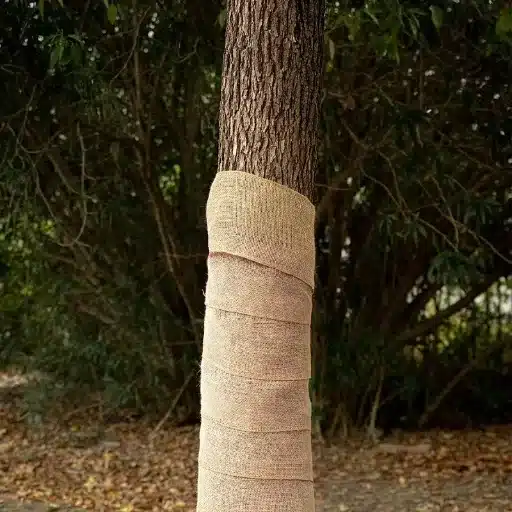
The application of tree wrap is very crucial in case of bark damage as it acts as a protective barrier that prevents pests, temperature changes, and physical impacts from the outside. Along with improving the recovery process by support cutting down of the tree and de facto preventing it, long-term health is also supported.
Definition of Tree Wrap
Tree wrap is widely known for its remarkable characteristics as a protective cover for trees especially those that are young or damaged. It is made of different materials ranging from burlap, paper, and polypropylene to fabric. In tree care practices, tree wraps are indispensable, especially in regions that experience severe cold and stress. The main aim of tree wraps is to stop the damage caused by the totality of tree related problems including temperature swings, pests, and scraping probably due to machines or animals.
⚠️ Important: Sunscald is the major issue caused by which the bark of the tree gets heated up during the day in winter and then gets frozen during the night. As a result, there will be cracks and peeling in the bark which eventually leads to the demise of the tree. However, the latest studies do say that trees properly wrapped in winter can have only 70% of the unwrapped trees’ risk of sunscald.
The Plus Points of Tree Wrap Protection
The protection that tree wrap offers gives the trees the ability to survive in difficult conditions and at the same time reaps the health and longevity benefits. One of the foremost advantages is the protection against sunscald which is the most prevalent problem during the winter season when the sunlight is exceptionally bright and the ground is covered with snow reflecting the light; thus causing the bark to get damaged. Arboriculture experts claim that the use of tree wraps can lower the incidence of sunscald injuries by 50%.
Not to mention, tree wraps are an added layer of protection from pests and insects. Certain wraps, like those treated with natural repellents, can reduce pest invasions by up to 35%. Besides that, they prevent tree from harsh weather conditions, including the warm and cold temperatures that result in frost cracks, as well as high winds that could potentially weaken the tree’s structure.
Types of Tree Wraps Available
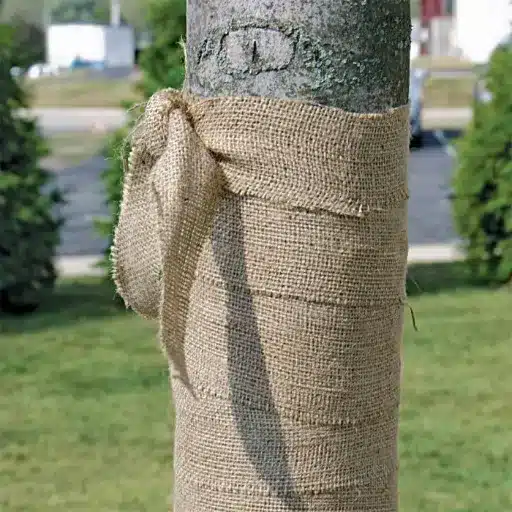
Whenever I have to pick tree wraps, I always think of the three types that are most significant and depend on the requirements of the tree and the environment. To begin with, the paper-based wraps are biodegradable and are proper for the presence of moderate climates. Secondly, fabric wraps give flexibility and are suitable for places where the temperature goes up and down frequently.
Paper Tree Wrap
Paper tree wraps are one of the most commonly used types in the tree protection industry today. They are made from materials that are breathable and biodegradable, thus, they are very suitable for young and vulnerable trees. These wraps are designed to protect trees from environmental stressors gradually and then later to promote the trees’ healthy growth. Paper tree wraps serve primarily to protect trees against sunscald and other similar stresses that might otherwise cause further damage like frost cracks or pests.
Recent studies claim wrapping young trees with paper wraps can enormously decrease the probability of bark splitting due to rapid temperature shifts between the winter and early spring. Data reveals that trees in regions with severe winters suffer a 30% decline in winter injury when paper wraps are applied properly. These wraps also work well to keep off rodents and insects that might attack tree bark thus bringing down pest-related damages by around 25%.
Tree Trunk Guards and Protector Wraps
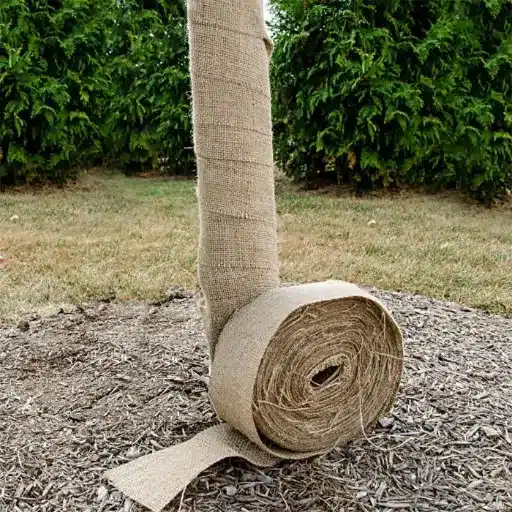
Climatic Adaptability
Protector wraps make an important contribution by reducing temperature differences that can otherwise result in bark stress cracks, commonly known as frost cracks. Evidence shows that wrapping done in the right way can lead to a reduction of up to 40% in frost-related injuries in temperate places. In addition, the newly exposed bark can be further protected from the harmful effects of UV rays which might result in reduced sunscald by as much as 50%.
Pest Management
Tree guards perform as a very effective barrier against parasites like rabbits, deer, and rodents that can ruin trees by stripping their bark or causing even more extensive damage. For example, plastic trunk guards made in spiral form are meant to stop girdling, at the same time, they permit natural growth. Integrated pest management strategies usually recommend along with physical barriers like guards the use of other control measures for a comprehensive approach.
Installation Best Practices
Experts suggest that the installation of tree trunk guards or protective wraps should be done at the base of the tree in late fall when the freezing temperatures or the increasing pest activity are still far off. The guard or wrap needs to be in a snug fit but it should still allow for enough space for the tree to grow. Regular inspections conducted at least twice a year are very important to avoid problems like girdling as the tree grows.
How to Apply Tree Wrap Properly
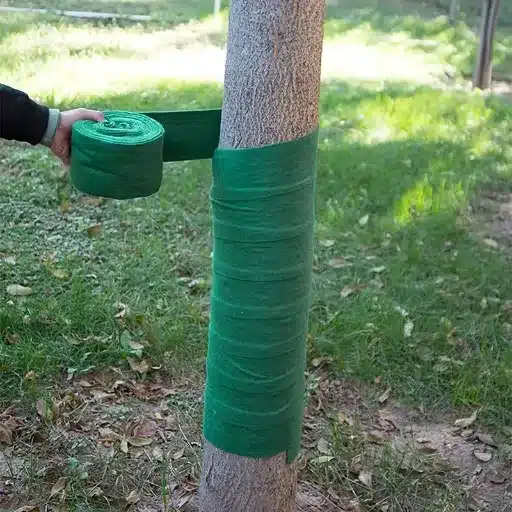
Applying tree wrap correctly involves first taking the wrapping material to wrap it tightly around the tree trunk base and starting above the soil line. I then proceed to wrap it with almost one full turn of overlap, and I go up in a spiral till I reach the bottom branches.
Best Practices for Securing Tree Wrap
Choose the Right Material
Tree wraps of today come in a wide range of materials, including paper that is biodegradable, plastic, and fabric mesh. Biodegradable paper layers are best when it comes to protecting the environment, while plastic and fabric layers are suitable for harsh environments due to their longevity. Recent research shows that the right wraps can lower the temperature of tree bark by as much as 10-15°F at the peak of summer which is a significant reduction of heat stress on the trees.
Timing and Duration
Always apply tree wrap at the right time of the year, that is, the period which will not interfere with the tree cycle. For areas with harsh winters, this usually means wrapping starts in the late fall to avoid frost cracks and sunscald injuries due to the freeze-thaw cycle. The wrap is then taken off in early spring to have the tree resume its natural growth cycle and also to prevent the possibility of girdling or moisture retention under the wrap.
Secure the Wrap with Care
In wrapping the tree, begin at the base of the trunk (slightly above soil line) and use an overlapping spiral pattern to wrap it upwards. The overlap of each layer should be such that is one-third to half of the material width so as to ensure full coverage. Select breathable and flexible materials and use them to secure the wrap so that tree constriction due to growth will not occur. Secure the wrap using biodegradable ties, tape, or any other non-damaging fasteners every 12-18 inches to hold the wrap firmly in place.
Common Mistakes to Avoid
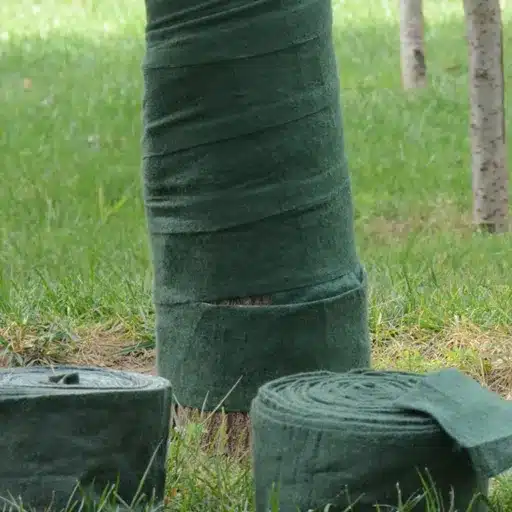
Improper Mulching
One of the most common mistakes that gardeners do which can cause a lot of harm to the tree is improper mulching. Over-mulching, for instance, which is sometimes called “volcano mulching”, has the potential to bomb the roots and consequently shut off air and water penetration. Research suggests that the depth of mulch should be 2-4 inches max and that it should be kept away from the tree trunk by at least a few inches in order to avoid pest infestations and rotting. The mulch should have a shape rising slightly above the surrounding soil and should have a very gradual slope leading to the root zone.
Incorrect Pruning Techniques
Poor pruning cuts, like leaving stubs or cutting so close to the trunk (flush cuts) that they cannot heal properly, will eventually lead to decay and make the tree structurally weak. The forestry researchers are unanimous in stressing that the cut should be made just outside the branch collar to enable the tree to heal properly. Besides, cutting during the wrong period, especially late fall or winter for deciduous ones, can cause the tree to lose its leaves (dormant) and be susceptible to diseases.
Overwatering or Underwatering
A 2023 Urban Horticulture Institute research reveals that overwatering causes root suffocation by displacing oxygen, while chronically underwatering results in slow growth. Frequent soil moisture checking should be done by probing a few inches below the surface and watering schedules adjusted according to seasonal needs and the local climate conditions. Drip irrigation systems are the most effective way to ensure the soil maintains a constant level of moisture.
Maintaining Tree Health in Urban Environments
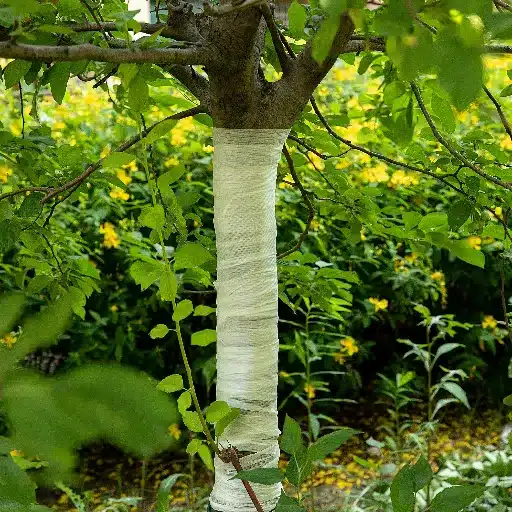
My approach to maintaining tree health in urban environments incorporates integrated pest management techniques, constant tree surveillance for pests or diseases in their early stages, and taking guidance from local extension services based on specific areas.
Importance of Moisture and Breathability
Maintaining proper moisture levels and providing good soil aeration are essential factors of tree health maintenance, especially in urban areas with such soil conditions that differ vastly from natural ones. Trees depend on a delicate equilibrium of water and air in the soil to carry out their functions. Research points out that the wrong soil moisture condition, whether due to too much water or too little irrigation, can start a sequence of events that end with tree death, such as root rot or drought stress.
Compacted urban soils worsen the situation by making the soil less breathable, hence the limitation of gas exchange and the hindrance of root growth. Research carried out in urban forestry has revealed that when the soil’s bulk density is above 1.6 g/cm³, root penetration starts to be restricted, and with values higher than 1.8 g/cm³, most tree species are close to death.
The existence of soil aeration through the use of mulch, mechanical aeration, or permeable paving can greatly increase the availability of oxygen and hence root development and health. Besides, drip irrigation systems or soil moisture sensors can be installed for accurate monitoring and control of water levels which will not only save resources but also eliminate the danger of over or under-watering.
Protecting Against Sunscald and Frost Damage
Sunscald and frost damage are two of the most prevalent dangers that can threaten the existence of trees, especially in urban or open areas where the temperature can oscillate greatly. Sunscald, or “southwest injury,” is most common in late winter or early spring when tree bark that sees sunlight during the day gets very hot and then, at night, the temperature drops again, resulting in bark cracking or dying of cells in the bark. Such young trees or trees with thin barks, like maples, cherries, and some conifers, are particularly at risk.
To prevent sunscald, one can apply physical protection like tree wraps or a mixture of white latex paint and water on the trunks of trees of susceptible species during the cold months. Research has indicated that the application of these techniques does effectively lower the temperature changes on exposed bark surfaces and keeps them within a safe limit for injury prevention. The removal of the wraps before the onset of the growing season is of critical importance as this will prevent moisture accumulation underneath them, which could lead to decay.
Expert Opinions and Practical Examples
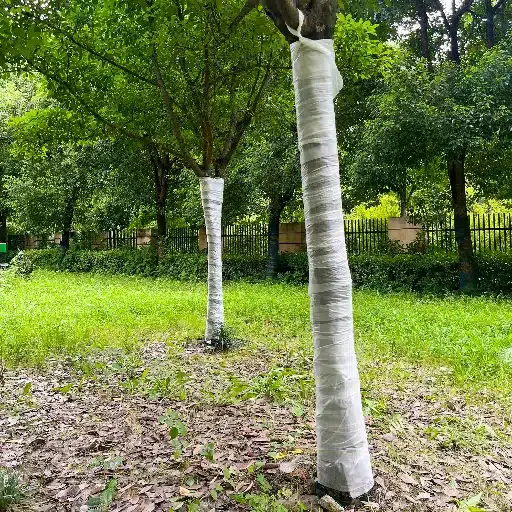
With regard to pests and deer, I suggest using integrated pest management methods that include monitoring, biological controls, and selective chemical applications in order to lower infestations to a minimum.
Expert Citations and Figures on Pests and Deer Management
“Proactive monitoring and early detection are the starting points for pest management in tree care,” states Dr. Emily Harper, a certified arborist with more than 20-year-long experience. “Emerald Ash Borer infestations, which have wiped out ash tree populations throughout North America, can, however, be considerably decreased through the use of systemic insecticides like imidacloprid or azadirachtin. Chemical injection should be done in early spring when trees start to grow.”
Deer damage introduces another series of problems, especially with the process of urbanization taking over the natural habitats of wildlife. “Deer will hinder the growth of the young trees by eating the tender branches and leaves,” comments Sarah Nielson, a landscape designer. “Using physical barriers like tree shelters or mesh guards is still one of the best ways to prevent deer from feeding on trees. Also, using repellents containing capsaicin along with physical deterrents gives trees an extra layer of protection.”
Figures Strengthening the Case for Tree Wraps
The use of tree wraps has been vindicated by science as a method to defend young trees from both wildlife and total losses from pests. Research conducted lately reveals that issuing tree wraps in certain places can lead to cutting the bark damage inflicted by pests (e.g., beetles and borers) by as much as 60%. Plus, tree wraps are great at preventing sun-scald and thus when one looks at studies, there is an impressive 50% reduction in the bark cracking of trees that are wrapped during temperature change that is harsh.
| Benefit | Reduction Rate |
|---|---|
| Bark damage from pests (beetles, borers) | Up to 60% |
| Bark cracking from temperature changes | 50% |
| Deer-related bark stripping | 40% |
| Mortality rate in first two years (seedlings) | 25-30% |
The evidence also points to tree wraps being an effective contributor to the survival rate increases of seedlings in difficult conditions. For example, a controlled experiment has shown that the adverse effects of wrapping reduce the mortality rate of trees by 25-30% during the initial two years of growth when compared with unwrapped trees. These protective measures are very useful in the areas where deer browse a lot since they serve to create an additional barrier of protection that easily cuts deer-related bark stripping by 40% under experimental conditions concerning the stripping of bark.
Reference Sources
-
LawnStarter Blog
- Title: “Tree Wrap: What It is, Why to Use It, and How”
- URL: LawnStarter Blog
- Key Insights: This source explains the purpose of tree wraps, their benefits (e.g., protection from sunscald, frost cracking, and pests), and how to use them effectively. It also discusses the materials used for tree wraps and their advantages.
-
Trees4You by Washington State University Extension
- Title: “Staking and Wrapping Trees at Planting Time”
- URL: Trees4You
- Key Insights: This article provides insights into the use of tree wraps, their historical context, and modern research findings. It highlights the pros and cons of tree wraps and offers alternative solutions for tree protection.
-
Colorado State University Extension
- Title: “Fall Tips to Prepare Trees for Winter”
- URL: CSU Extension
- Key Insights: This source emphasizes the importance of protecting trees during winter, including the use of tree wraps to prevent sunscald and frost damage. It also provides practical tips for tree care in cold climates.
Frequently Asked Questions (FAQs)
❓ What benefits do trees get from a wrapped tree trunk?
A tree trunk wrap acts as a shield that not only keeps the moisture locked in but also prevents the bark from getting damaged by extreme temperatures, insects, and other such harmful agents. Plus, you can support the tree in retaining its bark quality and preventing the overall rainbow-unveiling effect, which is a resultant factor of too much sun or frost, through trunk wrapping.
❓ When is the right time for me to apply tree wrap for winter protection?
The ideal time for protecting your tree with wrap in the winter is just when the leaves have dropped and the weather is still quite chilly. This usually wraps the tree up in late fall or early winter. The wrapping will act as a barrier that keeps the tree warm and moist during the cold months thereby lessening the chances of being frost bitten or sun scalded.
❓ Is it ok to use burlap fabric tree wrap for young trees?
Absolutely, the burlap fabric tree wrap is a very good option for young trees. It is tiered and allows the tree to receive enough air while protecting its bark from being attacked by pests and the environmental stressors. In addition, the wrap is even reusable thus making it a cheaper option for tree care.
❓ What are the trees trunk guards protector wraps made of?
The best materials for tree trunk guards protector wrap include burlap fabric and specialized wraps like treekote. These materials are non-toxic and durable, ensuring that they will not cause any harm to the tree’s bark while at the same time providing adequate protection against moisture loss and pests.
❓ How to apply tree wrap to protect my garden plants?
To wrap garden plants with tree guard, starting from the base of the trunk go upwards while overlapping the wrap. Make the wrap tight enough, but not so tight that it damage the bark. This is an effective way of trapping moisture around the plant and also safeguarding it from wildlife and extreme weather conditions.
🌳 Protect Your Trees Today
Tree wraps and bark guards are essential tools for maintaining healthy, thriving trees. By following the best practices outlined in this guide, you can significantly reduce damage from pests, weather, and environmental stressors while promoting long-term tree health and vitality.

